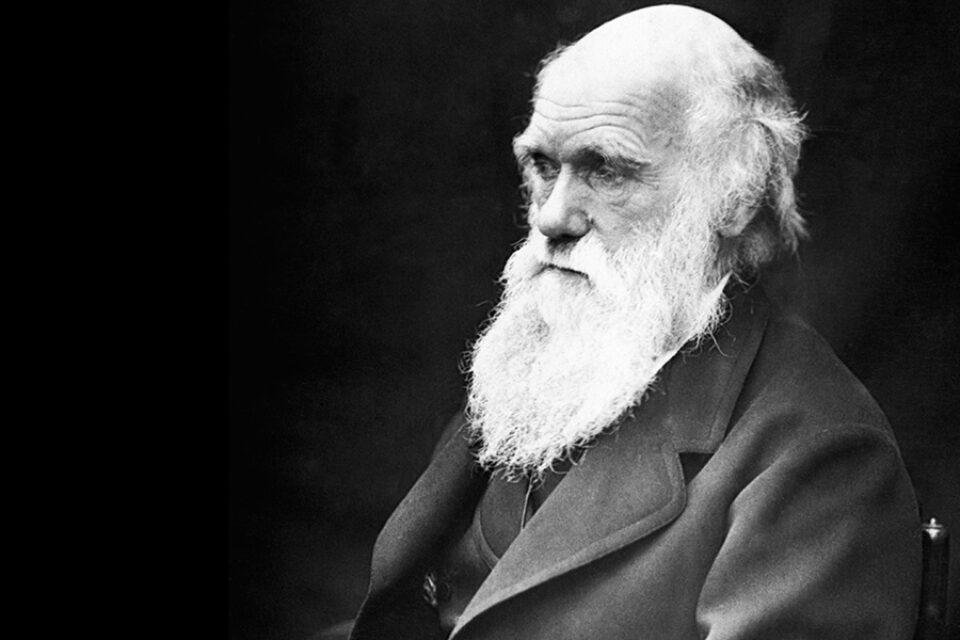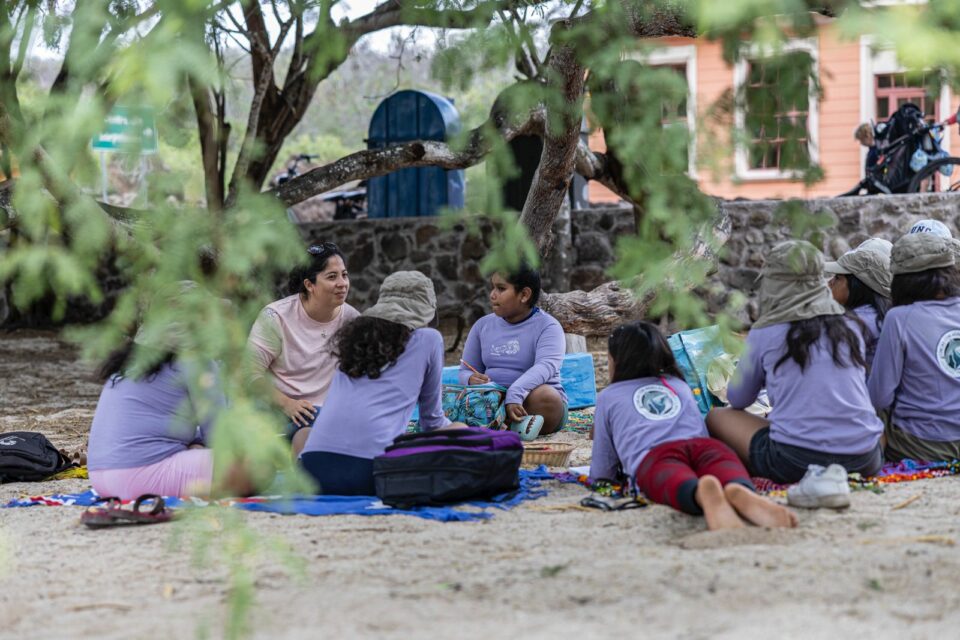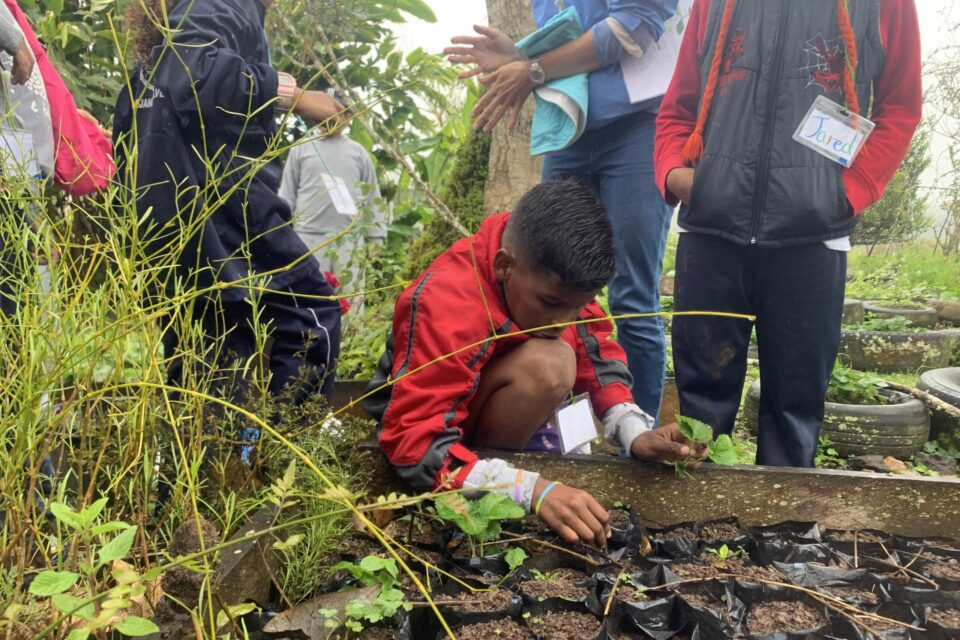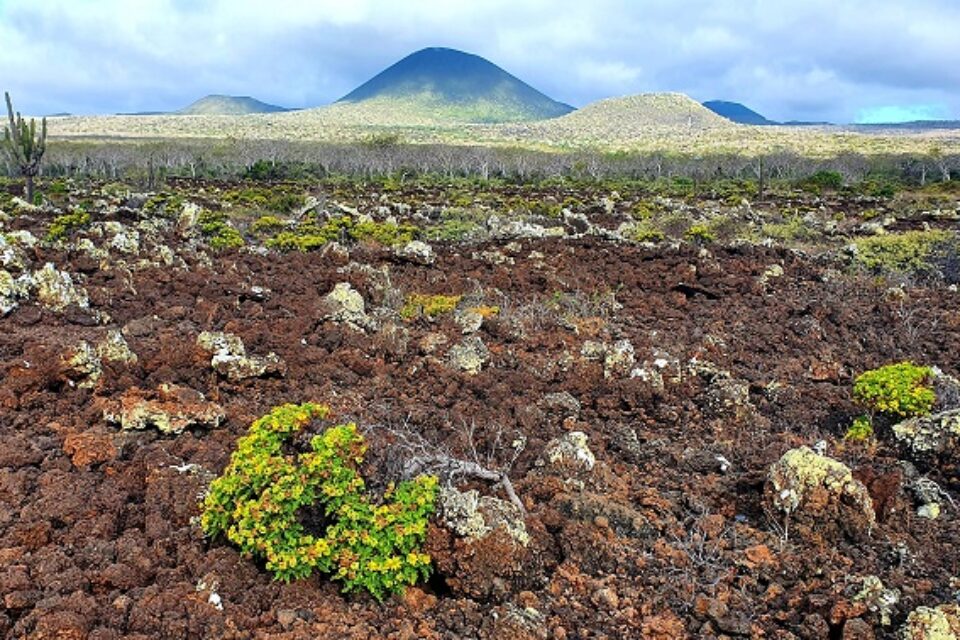

Q&A with Galapagos student, Wilson Andrade
During December 2019, we were pleased to welcome Wilson Andrade from San Francisco University of Quito to the GCT office in London.
Based on San Cristobal, Wilson visited the UK through the University of Exeters’s Global Challenges Research Fund and joined GCT for a few days to learn more about our work conserving the Islands.
Wilson has worked on a number of GCT’s projects in Galapagos and as a student at the Galapagos Science Center, has been a key participant in its Join Science programme.

Wilson Andrade (right) representing the Galapagos Science Center and the Join Science programme at international workshop on plastics in Quito in September 2019. © Galapagos Science Center
Read more about Wilson’s experience below,
-
What is the Join Science scheme?
Join Science is a program that began at the beginning of 2019 and was created so that all the local students of the University of San Francisco de Quito – Galapagos Extension, can have a direct approach to Science and participate in most of the scientific projects that the Galapagos Science Center (GSC) performs throughout the Galapagos Islands.
-
How did you get involved?
I started volunteering at the end of 2016 long before the program was created. One day I approached my biology professor, Diego Páez, and asked him about his project working with sea lions that I often heard him talking about. I was curious about how scientific projects were carried out in Galapagos, so I talked with my teacher and he invited me to go on one of his excursions. After participating several times in the sea lion project, I decided to explore new work areas and new projects. Since then I have participated in more than 20 scientific projects that the GSC carries out in Galapagos.
-
What do you do?
For the Join Science programme, I help the scientists conduct their research in Galapagos and provide additional help with field work. I handle the animals, whether it’s a shark, a turtle, an iguana, a finch, etc. That way, the researcher can take data and perform the correct protocol so that the animals are not stressed. The work is varied, we all do everything. Also, in some projects, I help with laboratory work by extracting DNA or performing some other necessary processes.
-
How do you work with the local community?
As a member of Join Science, we work with the community doing recreational activities that are aimed at children, young people and adults. One of the activities we do with the community is Shark Day, when all members of the Join Science programme and local students run entertaining activities with the local community to teach them something new about sharks. That way there is a family learning and everyone enjoys science.
The other way I work with the community is when there is a research project, in which we must interact with the local people. This is very interesting since we see the other side of science, discovering the fundamental role of local people and their interaction with nature.
-
What have you enjoyed most about coming to the UK?
What I have liked most about coming to the United Kingdom has been learning about each process carried out in the research with macro and microplastic (a project that is carried out in Galapagos). All the knowledge I gained from working in the laboratories of the University of Exeter will be shared with all the students and members of the Join Science program.
On the other hand, at the Galapagos Conservation Trust office, I liked being able to express my ideas and recommendations to improve the Discovering Galapagos website, since this is a website that I used to use to do my University studies. I believe that by improving this website we will help more students to find more accurate information about Galapagos.
-
Finally, what is your favourite Galapagos animal?
This is a tough question; my favourite animals are the hammerhead shark and the humpback whale.
I believe that the unique beauty of Galapagos makes us live in a natural paradise and it is up to us to protect and conserve it so that the rest of the world can also appreciate it.
Thank you to Wilson for all of his hard work!
Related articles


Gills Club: Empowering young women in Galapagos

One woman’s mission to connect families with gardening and endemic plant conservation


